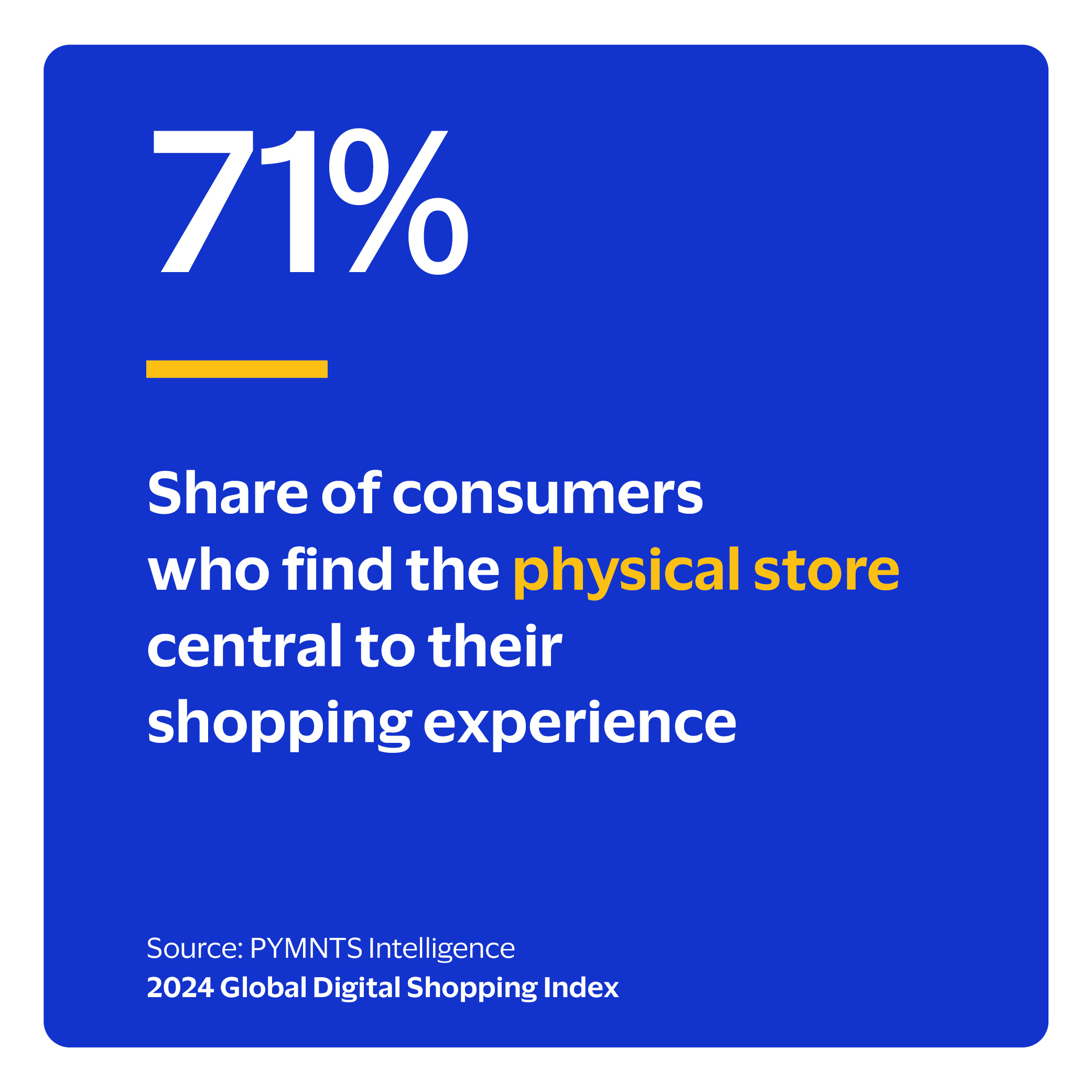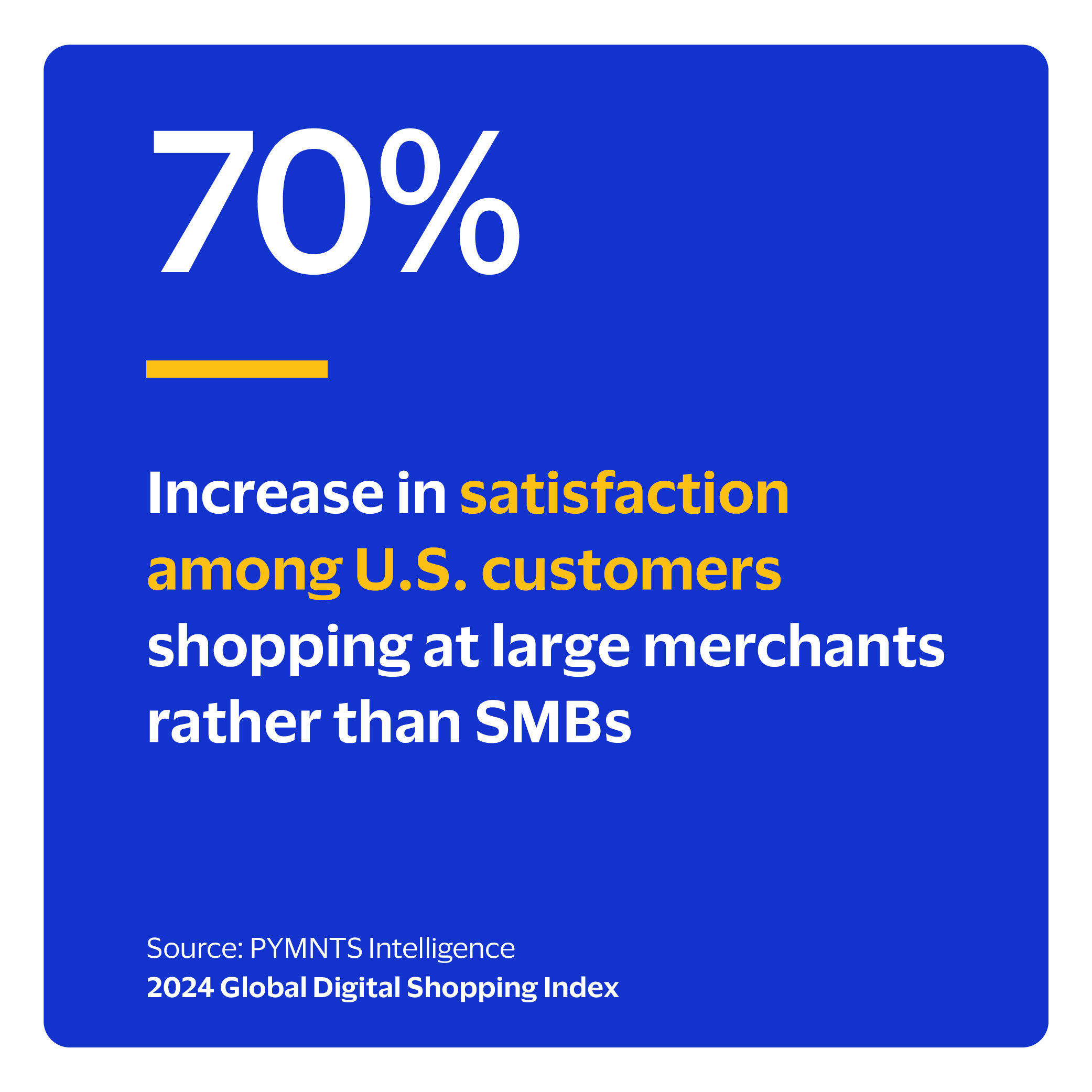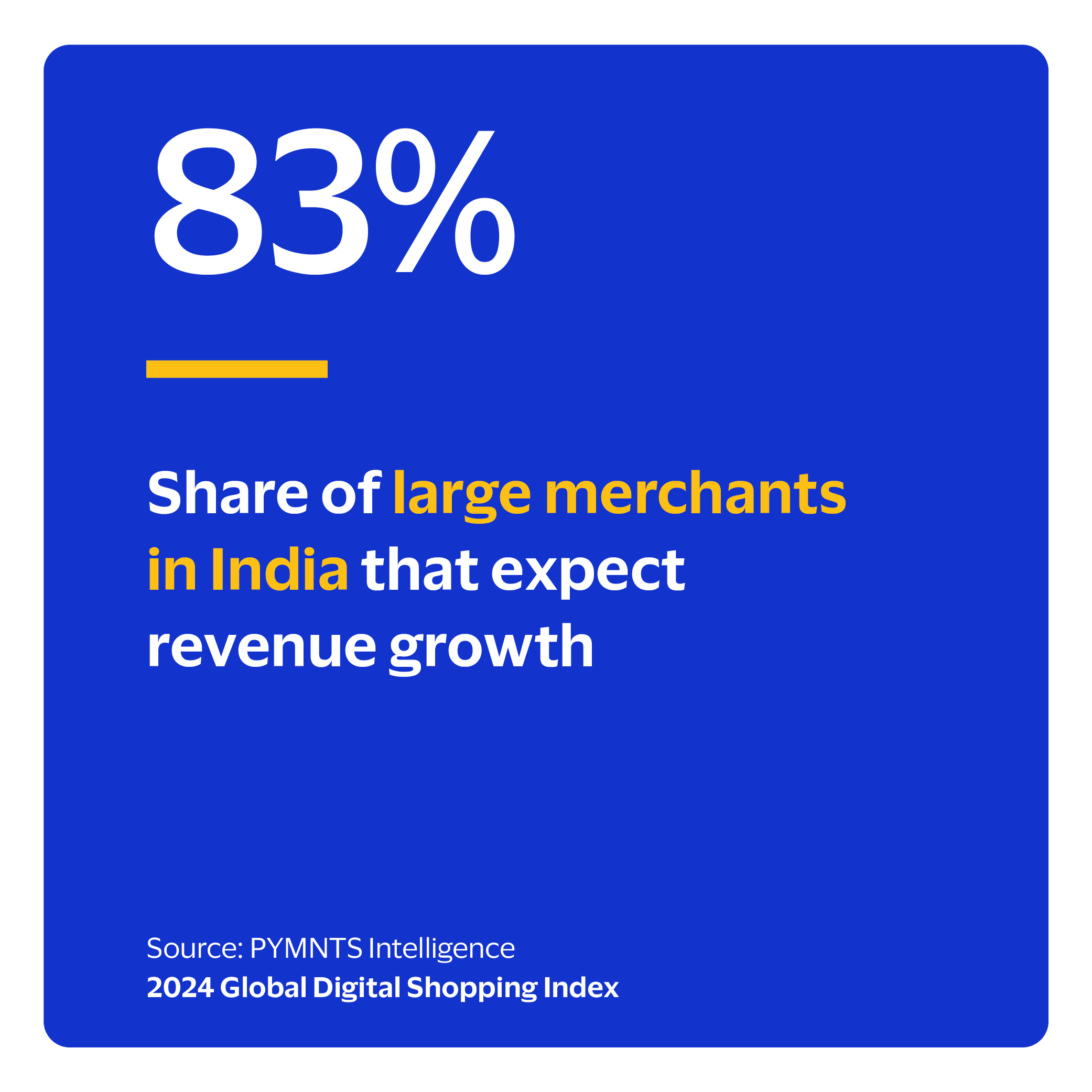Consumers increasingly want digital innovation no matter where they shop. Industry giants typically hold an edge in providing more digital shopping features because of their size and scale. However, savvy small to mid-sized businesses (SMBs) have found ways to punch above their weight despite their outsized challenges. These moves can have significant implications for customer satisfaction.
Although smaller businesses have improved in several key areas, many opportunities in digital shopping features remain untapped, including improvements to core feature provision. These represent opportunities for further growth that can unlock increased revenue and stronger customer relationships.
These are just some of the findings detailed in the “2024 Global Digital Shopping Index: SMB Edition,” a PYMNTS Intelligence study commissioned by Visa Acceptance Solutions. For this edition, we surveyed 13,904 consumers and 3,512 merchants across seven countries between Sept. 27, 2023, and Dec. 1, 2023. We sought to capture recent trends in consumer behavior across shopping experiences and to document the rise of Click-and-Mortar™ behaviors across sales channels and how they impact operations.
Other key findings from the report include the following:
 SMBs plan to increase their feature offerings to match larger merchants.
SMBs plan to increase their feature offerings to match larger merchants.
SMBs in every country in our study offer fewer digital shopping features than larger merchants. Still, SMBs have increased their feature offerings in the last year by between one and four features. Many small businesses plan to add more features in the future, indicating their intentions to match the range of features larger merchants offer. The type of products an SMB sells plays a role in feature implementation, with retail SMBs providing more features than grocery SMBs. This also carries over to future implementation, with retail expecting more implementation than grocery SMBS.
SMBs offer fewer digital shopping features, missing consumer expectations.
A merchant can come up short on a feature for consumers in two ways. Either they don’t offer the feature (provisional failure) or the feature is not easy to find (knowledge failure). To understand consumers’ perception of feature provision success, we compute “failure rates” that capture the portion of features consumers want to use relative to the features they can and do use. SMBs in Mexico and the U.S. exhibit the largest failure gap, at 62% and 55%, respectively.
Businesses can boost revenue and customer satisfaction by offering more digital shopping features.
By adding features consumers use regularly and expect from large merchants, SMBs can give customers what they want and rise above the crowd. These features include price matching, coupons or promo codes and rewards programs. Failing to find the features they want when shopping at a local SMB can turn consumers away. Core digital shopping features such as preferred payment methods and product details are more ubiquitous, with most merchants of all sizes offering these features.
Overall, SMBs are less likely to offer loyalty programs and price matching. Both are services in high demand that contribute to improve the consumer shopping experience. These features represent key areas in which SMBs should focus their efforts to meet consumer expectations and align more closely with the offerings of larger merchants. Download the report to learn how SMBs leverage digital shopping features to create Click-and-Mortar™ experiences to rival larger retailers.